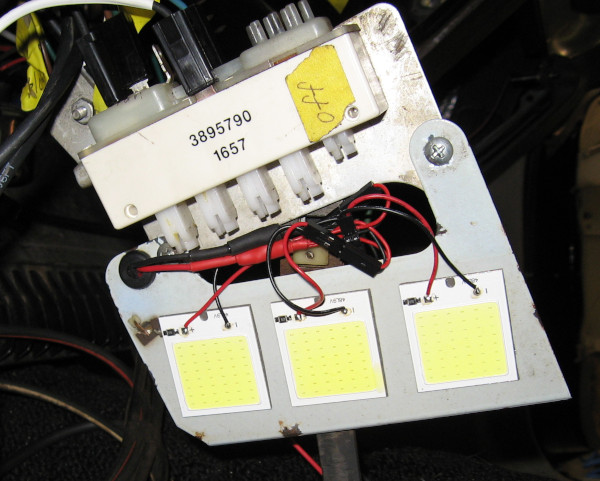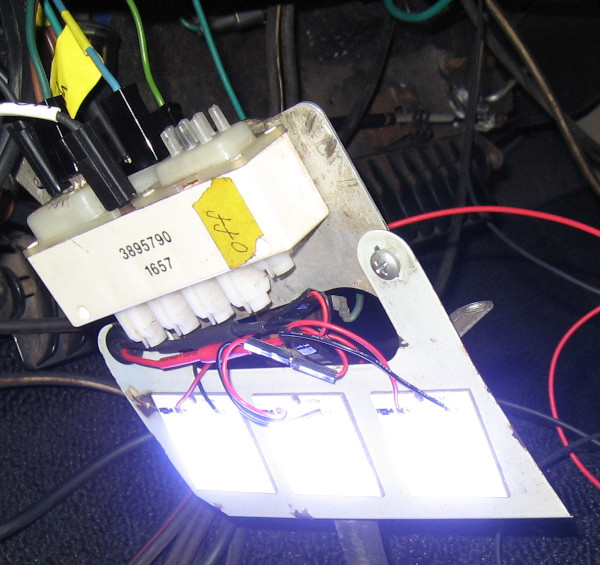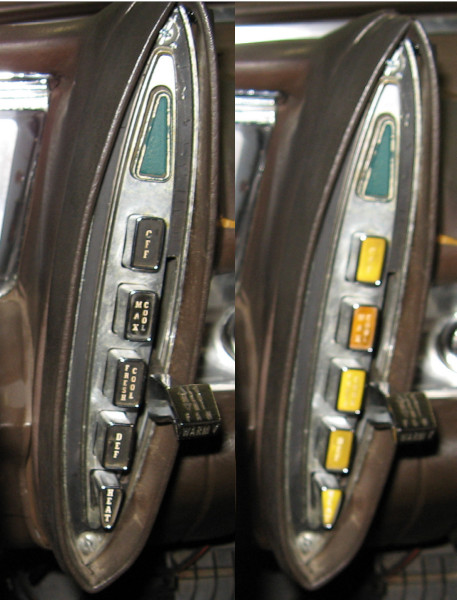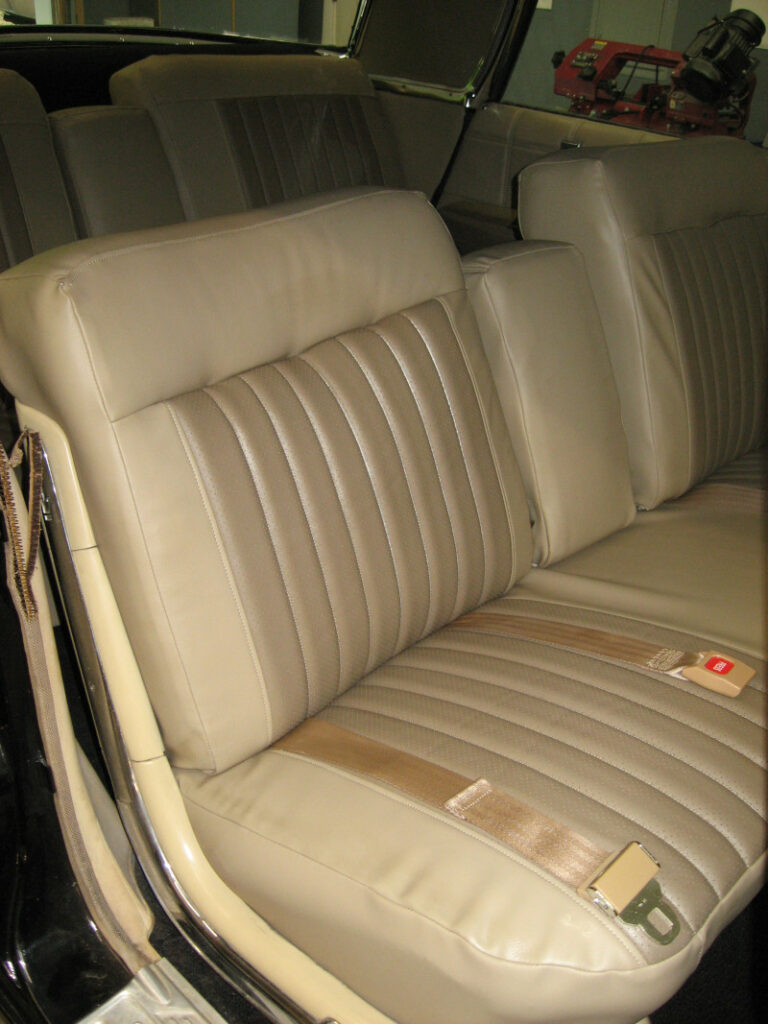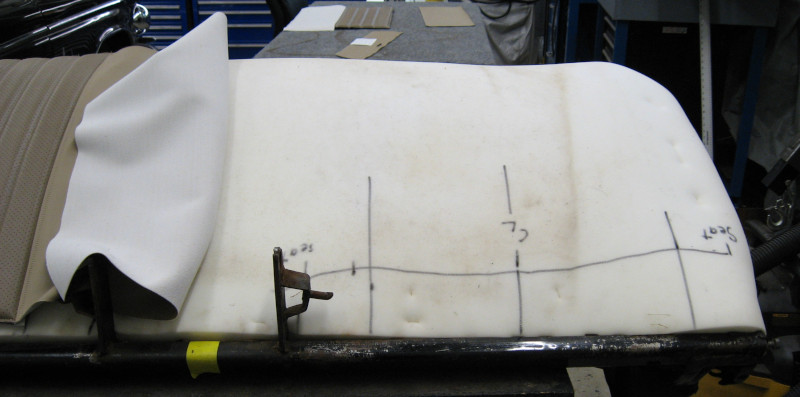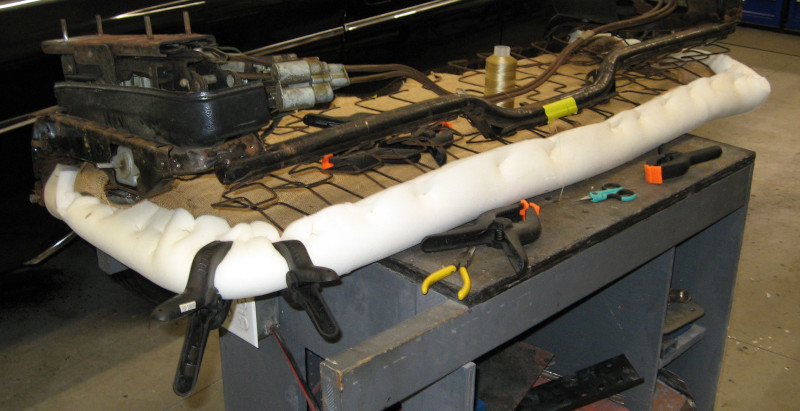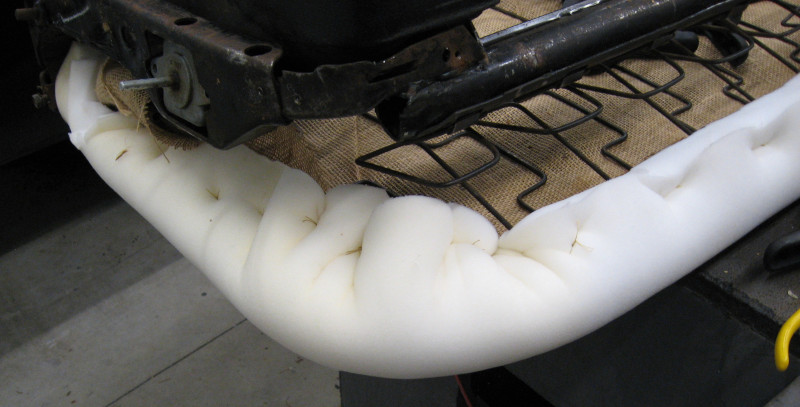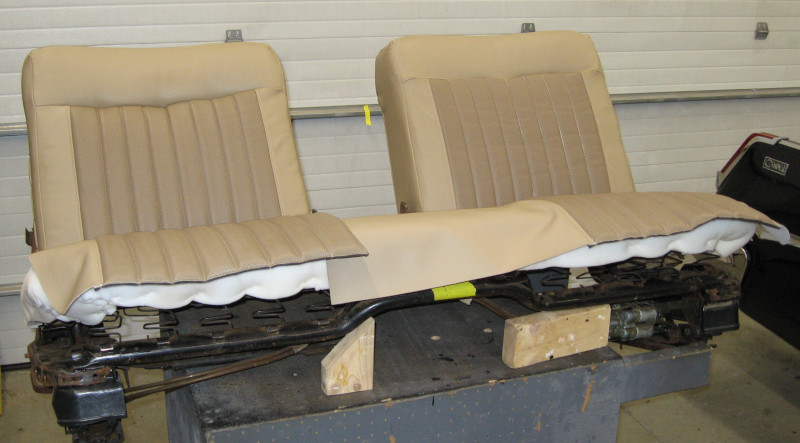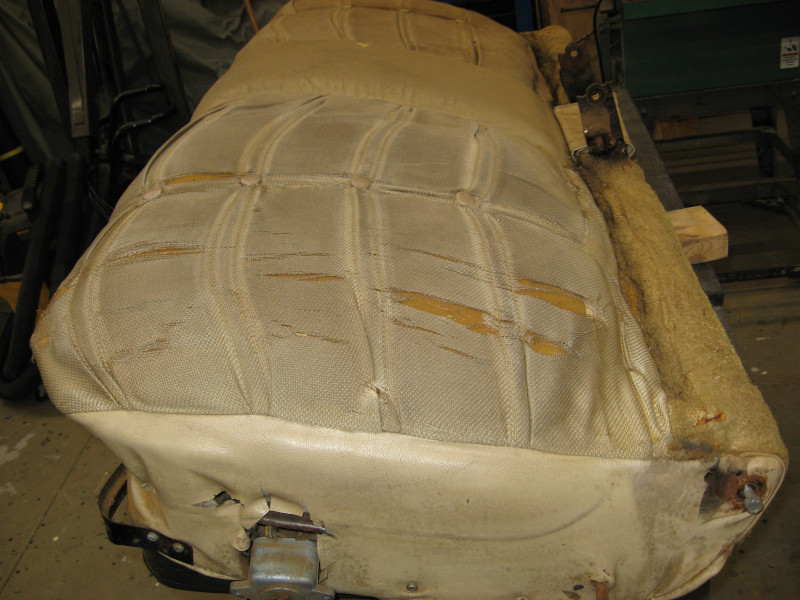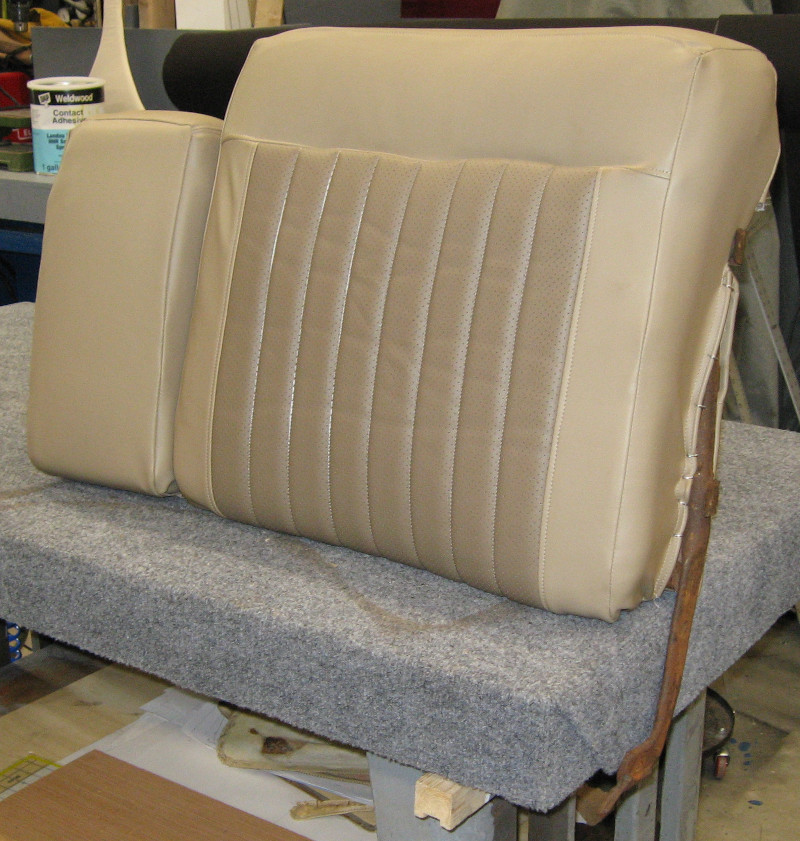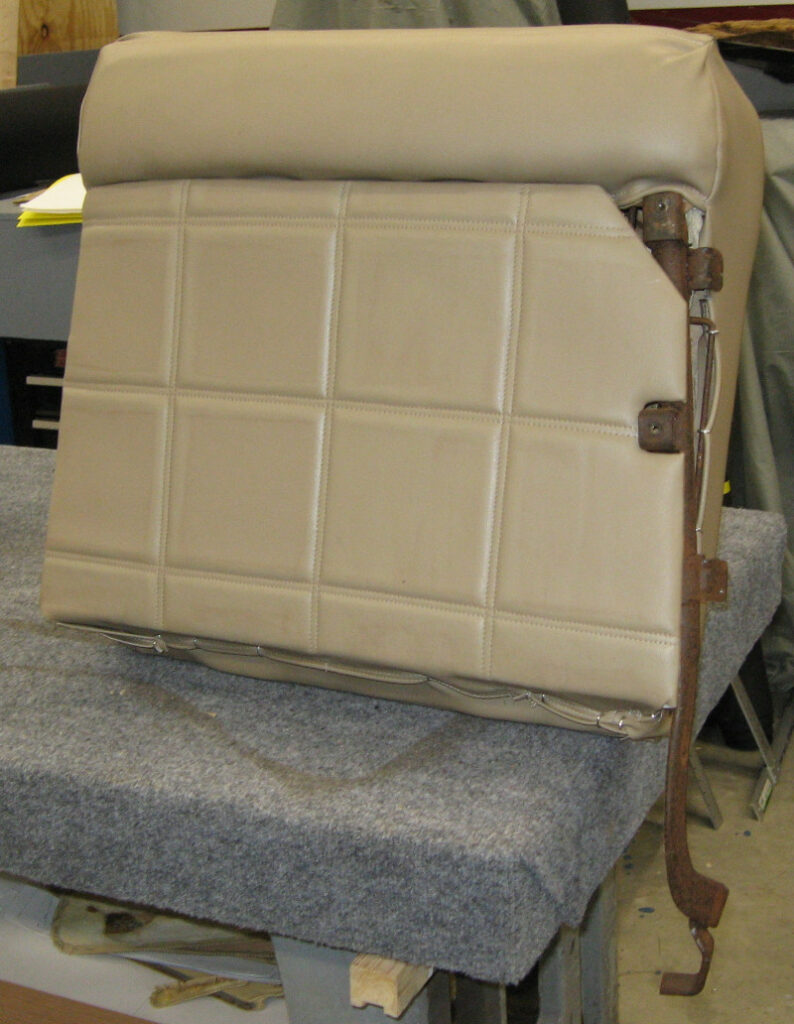I’ve had an intermittent electrical problem for several months – one of the most frustrating things that can happen. The courtesy lights – lights in the front doors and a map light in the dash – come on when you open a front door and go off when you close the door. At least they are supposed to…
The problem started last spring when the courtesy lights came on with the Imperial just sitting in the workshop and then completely drained the battery. Fortunately I was able to recharge the battery and it seems to be OK.
I started to trouble shoot the problem and it went away after driving the car. OK, yet another reason why you need to regularly drive your cars!
Since then the problem has randomly occurred and then gone away. Finally last week the lights came on and stayed on. Great! A hard failure can actually be diagnosed! And it was a good time in the project where nothing else was in the way. Time to dig out the multi-meter and patch cords and see if we can chase this gremlin down!
The first thing to know about lighting circuits like these is that they are wired up backward. Most circuits switch the power on and off and have ground permanently connected. This can get complicated when you have multiple switches and multiple lights on a single circuit and require multiple wires to make everything work.
On the other hand you can permanently provide power to all devices and have the switches connect to ground. Any place you close a switch, completing the circuit from power to ground, all of the lights on the circuit will come on. Simple, elegant, and effective!
I’ve been suspicious of the door switches. These are 60 years old and subject to wear. It would be easy for these to start making accidental contact to ground.
Starting with the drives door I manually worked the door switch. The initial signs were encouraging: Off then on, off then on. But then it went Off then on, off then on, off then on, on, on, on – even with the door switch physically removed from the circuit. OK, apparently not the driver door switch.
Next the passenger door switch. Once again the initial signs were encouraging: Off then on, off then on. But then it went off then on, off then on, off then on. Looks like we found the problem, so put the trim panel back on. And admire the now shining lights. That are supposed to still be off.
This actually makes sense! Looks like there is a short in one of the wires. Take the trim panel back off and the light goes off. Carefully examine the wires. Hmm, can’t find anything; the wire looks fine. Put the trim panel back on the the lights come back on. Take the panel off and the light goes out.
Just a minute – if I wiggle the wires in a different place the lights come on! OK, maybe there is a short circuit someplace in the middle of the dash. But these wires also look good. And now I can’t get the lights to come on.
Put the trim panel back on and the lights come on. I’m now getting both annoyed and frustrated.
While pondering the situation I hit the electric window button to make sure that the power windows still worked. The window worked great, instantly dropping down a couple of inches. And the lights went off. Raise the window back up and the light came back on. Ok, this is interesting. Try it some more: down/off, up/on, down/off, up/on, down/off, up/on.
This is a strong indication that there is a problem with the wiring inside the door! It looks like the window is rubbing on something and creating a short circuit. It is going to be a pain to open up the door and work on the wiring inside the door, but at least there is something solid to go after.
The first step in taking the door apart is to remove the light fixture from the door. And maybe I will get lucky and the problem will be close to the fixture so that I can fix it without taking the entire door apart.
Remove the chrome plated metal fixture from the door and the light goes out. OK, it really looks like a wiring problem! Play with the wiring for a while; nothing obvious. And the light doesn’t come on.
Put the fixture back in the door to check how the wiring fits. The light comes on as soon as the metal fixture touches the metal door. Try it several times and get the same result.
This is odd! Many light bulbs are grounded through the shell and this would be expected behavior. But this bulb has two terminals – one for power and one for ground – and the shell of the bulb doesn’t do anything. Unlike most bulbs the shell isn’t electrically connected to the filament. It doesn’t make sense for the bulb to light up when you ground the fixture.
Pop the bulb out and carefully examine the bulb, the socket, and the fixture. Nope, don’t see anything that would create a short.
Except…
I had replaced some of the courtesy lights with LED bulbs for more light, less heat, and less power. Just some of the bulbs – the LED bulbs wouldn’t fit into some of the sockets. And this was one of the LED bulbs.
Could there be a problem with the electronics inside the LED bulb creating an intermittent short circuit to the shell? Perhaps a short that was temperature or vibration related? Could it simply be the wrong bulb for this application? Could I have (once again) out-smarted myself trying to improve things that worked fine before?
Dig through my stash of bulbs and find a standard 1004 courtesy light bulb. Install it in the fixture and then ground the fixture. Nothing! Open the door and the light comes on. Just as it is supposed to.
Re-install the fixture in the door. Open and close the door several times – the light goes on and off every time. Try the drivers door – the light goes on and off every time it is supposed to. Try the map light switch. The light goes on and off every time it is supposed to.
Grab and wiggle the wiring every place I can reach it – the light stays off. Try the doors and map light again. Everything works.
All of that work was yesterday. I went out to the car today and tried everything again. Still working like it is supposed to!
At this point the indications are that it was in fact a defective LED bulb. But I’m still going to keep a close eye on it for the next several months. And I probably won’t be “upgrading” any more lights to an LED without a good reason!

